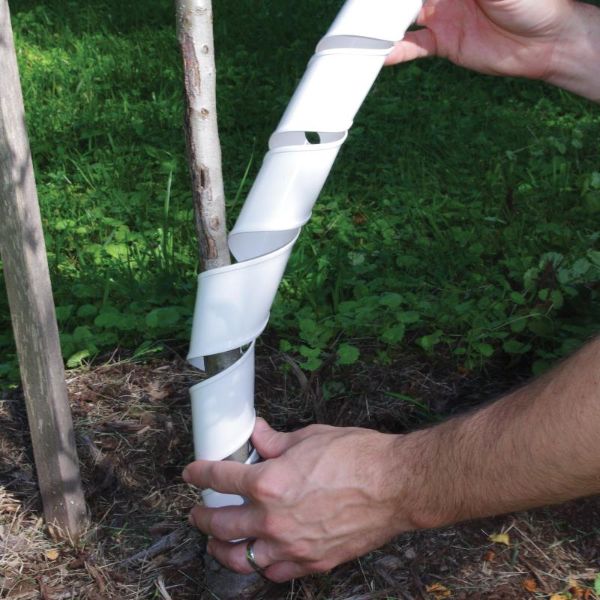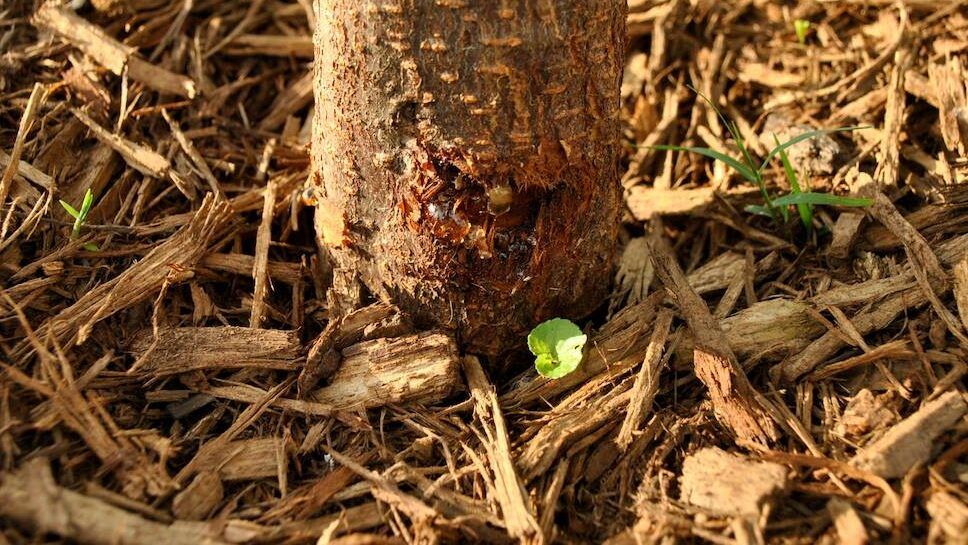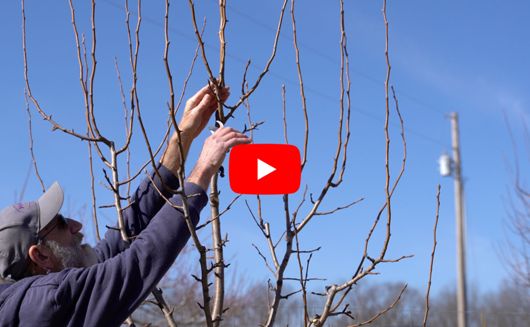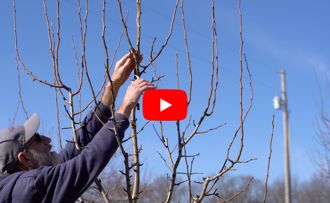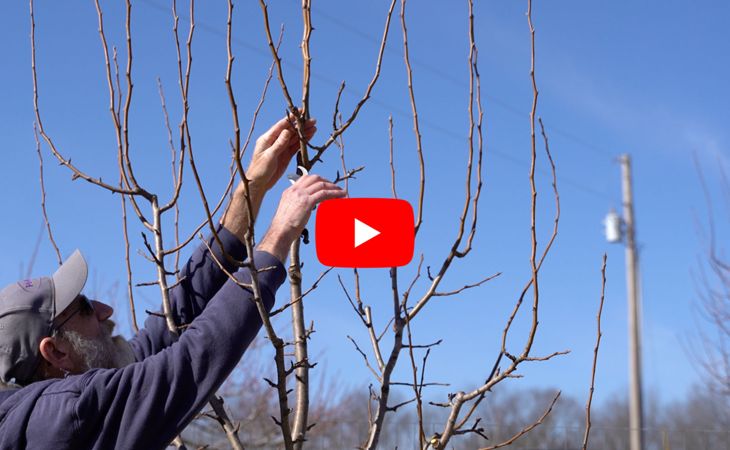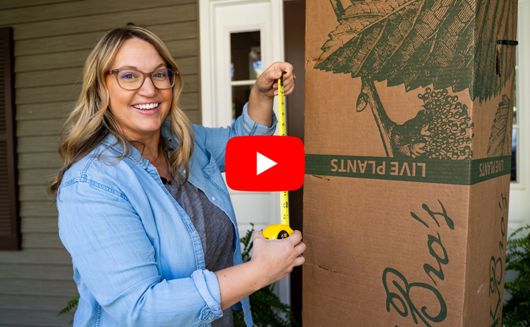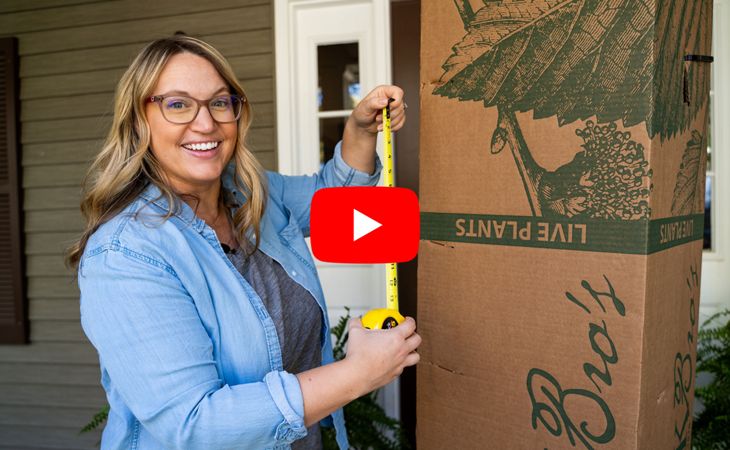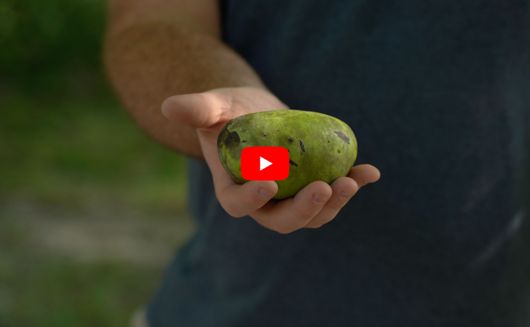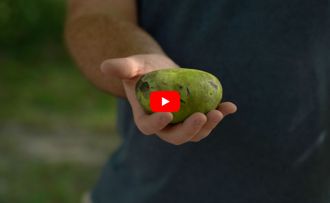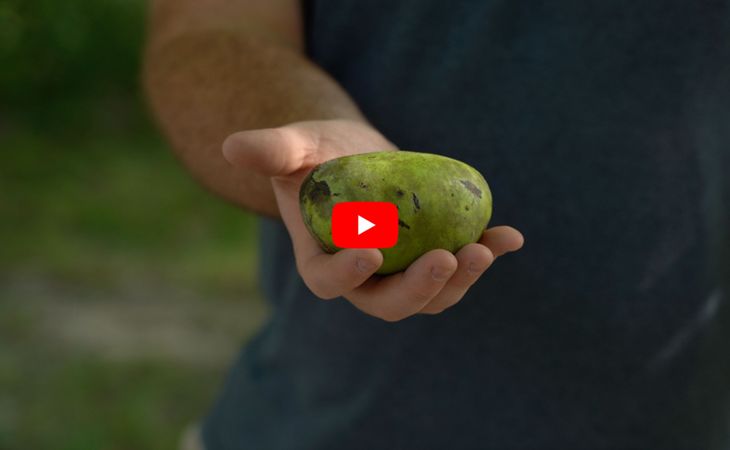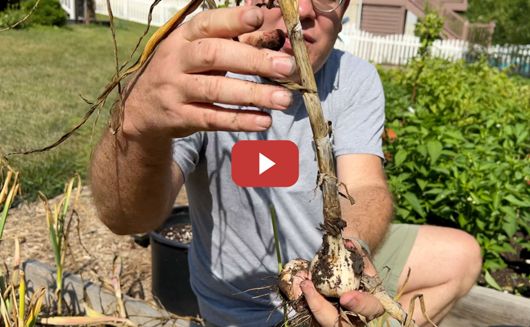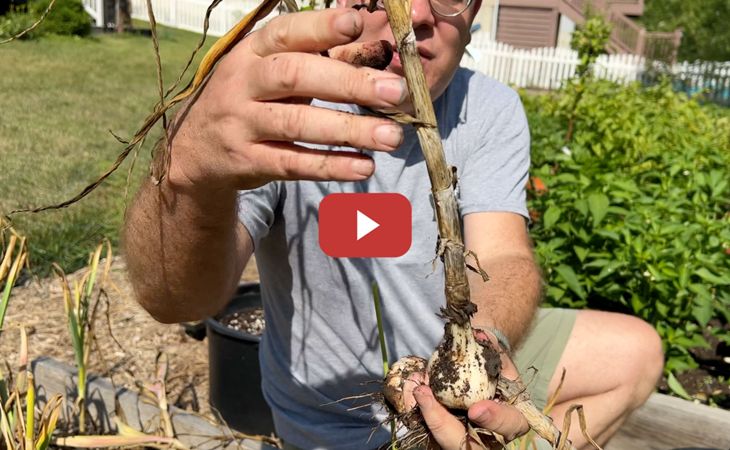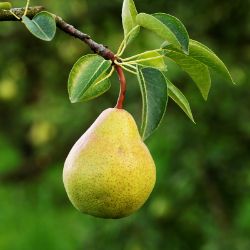Protect Your Tree Trunks with Tree Guards
A tree's trunk, much like its root system, is an essential part of its vitality. A healthy tree can attribute its vigor to the vascular system that exists within its trunk. Similarly, when a tree's vascular system is damaged or disrupted, its health will decline. This is why it is so important to ensure that a tree's trunk is protected, especially during its first few years in the ground.
Fortunately, protecting your tree's trunk is a convenient and easy process when you use tree-care accessories like Tree Guards.
What are Tree Guards?
Tree guards are an easy-to-use means of trunk protection. They can come in many shapes, sizes, and materials, but our Tree Guards are made of durable, lightweight plastic. They are available in different lengths for varying sizes of young trees:
- 10" for columnar trees
- 20" for most young trees
- 40" for larger trees
When to Use Tree Guards
The best time to apply tree guards is as soon as you plant your tree. This helps ensure that its protection starts from the moment it is planted in its new home; however, if you have already planted your trees, but haven't protected their tender young trunks, you can apply tree guards at any time of the year – ideally before injury occurs. Young trees are at risk of sun and animal-related trunk injury during the winter, so be sure to apply tree guards as part of your yearly process for preparing trees for winter.
Benefits of Using Tree Guards
Common Causes of Injury to a Tree's Trunk
- Rabbits and rodents (like mice)
- Winter sun (sunscald, trunk splitting, etc.)
When winter sets in, and other tender food sources become scarce, animals like rabbits and mice chew tender young bark out of desperation. This can cause girdling to trees, which completely disrupts the important vascular system that trees need to survive.
If a tree's branches are girdled, the damage can be pruned back and the tree will still live. When the trunk is girdled, chances of survival are low. Rabbits have been known to girdle dozens of plants and trees literally over night, so they are not a force to be underestimated. Tree guards help by creating a barrier between the tender bark and the foraging critters who would otherwise stop for a convenient nibble.
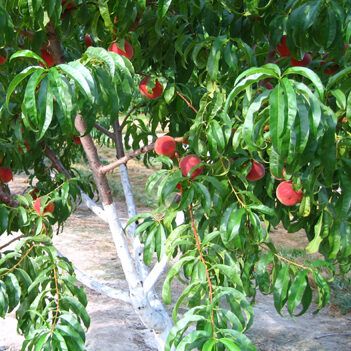
Winter sun can also be detrimental to a tree's trunk. Clear, sunny days in winter are followed by comparatively colder nights. A trunk's bark will expand in the warmth of the sun on days like these, only to shrink back again, drastically, in response to the temperature difference when the sun sets. This expansion and contraction in a short period of time causes splitting in the bark, especially on the side of the tree that gets the most prolonged sun exposure. Trees with lots of sun exposure can be affected by sun scald (like sunburn) as well, regardless of the season. Tree guards that are cream-to-white in color help to reflect light and heat, thereby reducing the level of harm the sun can cause to young tree trunks.
Note: If your tree's trunk is too large for tree guards, but you still have issues with winter sun injury, you may need to try protecting the tree's trunk with a diluted paint solution instead. You may have seen some trees with their trunks painted white. This serves the same sun-reflective purpose as our tree guards. A diluted solution of water and white latex paint (50/50) is mixed and applied to the tree, around the trunk, starting below the lowest branch and down to the ground.
How to Apply Tree Guards
- First, unravel the tree guards. Each package contains three individual trunk-protecting plastic spirals and they may be coiled together upon arrival.
- Go out to your young tree. Starting at the base, carefully wind or twist the spiraled tree guard around the trunk. It should go on easily and should not fit too tightly around the trunk.

Maintenance
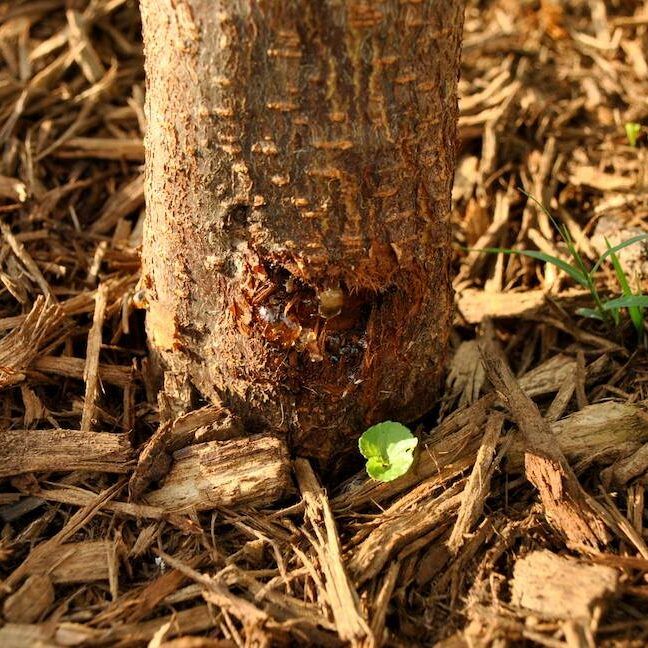
Tree guards are durable and reusable. This means that you can leave one on all year long until your tree outgrows it. It is still highly recommended that you remove tree guards at least twice a year (like late summer and late winter) to check on the status of your tree's trunk. This gives you the opportunity to analyze how your tree is doing and to loosen the tree guard if your tree's trunk has grown a lot since you first applied the tree guard. You should also use this time to clean out any vegetation that may have grown between the tree guard and the trunk. Reapply the tree guard after you have completed your routine maintenance.
Note: String trimmers and other lawn equipment are leading causes of tree mortality in the urban landscape. A common misconception is that tree guards will protect against lawn equipment. The fact is, even with protection, these lawn-care tools can decimate a tree guard and subsequently girdle trees of all ages. It's best to keep lawn equipment as far away from desirable plants and trees as possible.
Applying tree guards is a task that takes less than a minute per tree, so we think you'll agree that the benefits far outweigh the risk!
Shop Tree Accessories
Our selection of helpful tools will get your trees off to a strong start and keep them growing well, season after season.
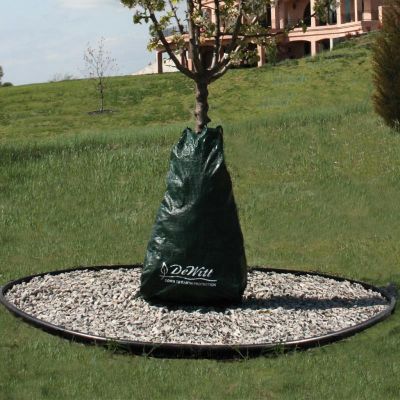 On Sale
DeWitt Dew Right Drip Irrigation Bag
$19.99
On Sale
DeWitt Dew Right Drip Irrigation Bag
$19.99
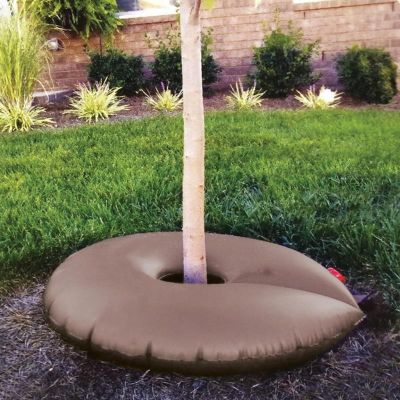 On Sale
DeWitt Dew Right Drip Irrigation Doughnut
$19.99
On Sale
DeWitt Dew Right Drip Irrigation Doughnut
$19.99
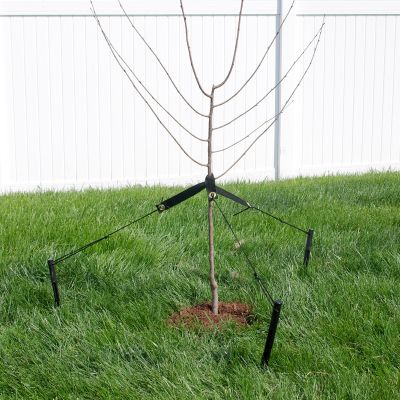 On Sale
DeWitt Tree Stake Kit
$15.99
On Sale
DeWitt Tree Stake Kit
$15.99
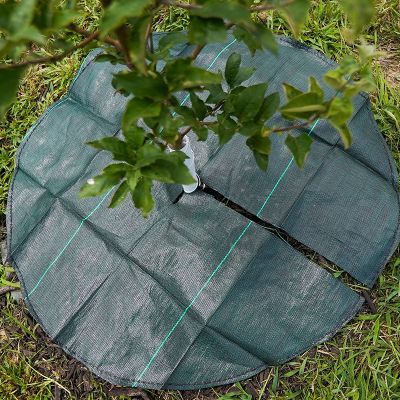 Dewitt Tree Mat Circle
$13.99 / 4 Pack
Dewitt Tree Mat Circle
$13.99 / 4 Pack
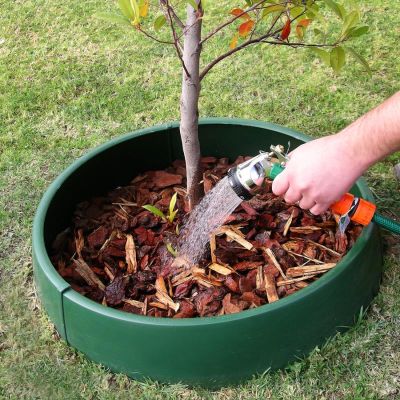 On Sale
GreenWell™ Water Saver
Starting at $16.99
On Sale
GreenWell™ Water Saver
Starting at $16.99
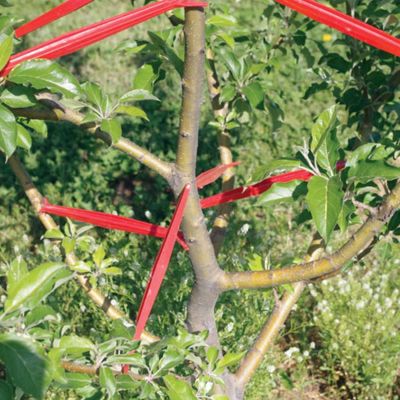 Save
Limb Spreader Collection
$17.99
Save
Limb Spreader Collection
$17.99
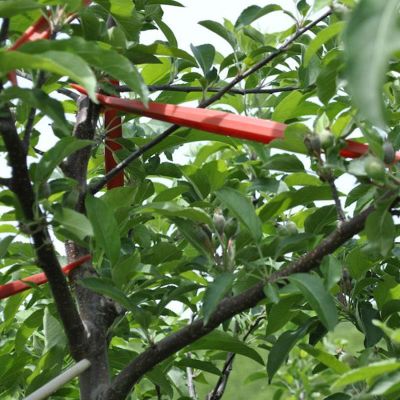 Limb Spreaders
Starting at $5.99 / 10 Pack
Limb Spreaders
Starting at $5.99 / 10 Pack
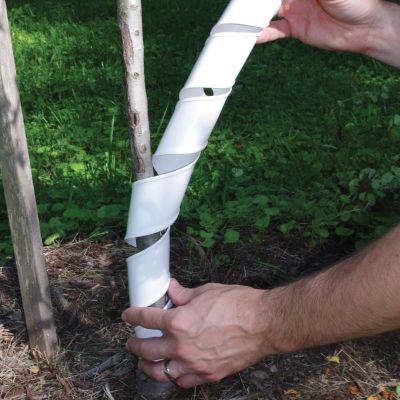 Stark® Tree Guards
Starting at $9.99 / 3 Pack
Stark® Tree Guards
Starting at $9.99 / 3 Pack
- Article Categories:
- Product Features
- Video

